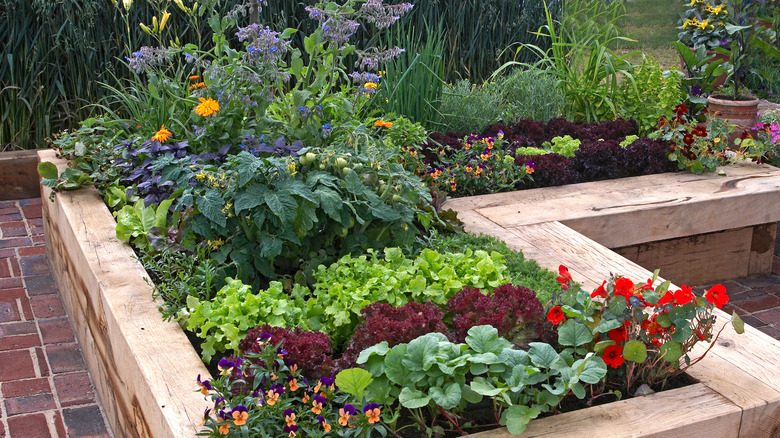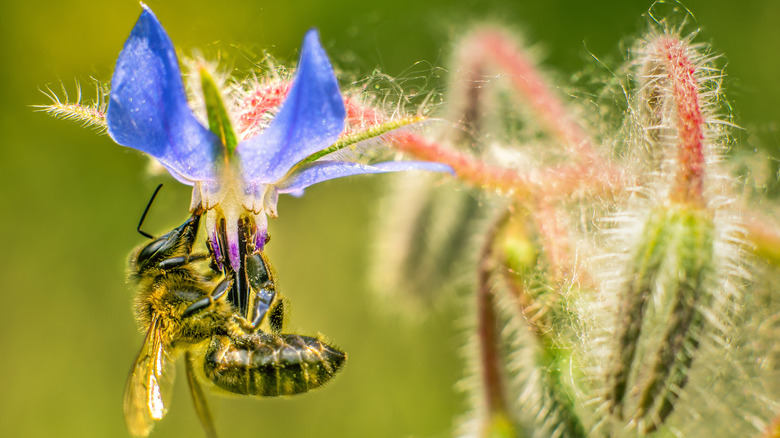Here's How Borage Can Benefit Cabbage In The Garden
Cabbage is a go-to yearly crop for the home gardener, especially in cooler climates. Seeds can be planted two to three weeks before the last frost in springtime for a summer harvest, and then again in the middle of summer for another yield in the fall. While cabbage is tolerant of the cold, its soil needs and pest concerns make it a tricky crop without the right companion plants. Planting borage (Borago officinalis) near your cabbage can attract beneficial insects, repel pests, and help fertilize the soil for healthier cabbage.
Borage, also known as starflower, is a flowering plant with fuzzy leaves and bright blue petals that can be used to make dye. Like cabbage, borage grows best in full sun, but it will also tolerate partial shade. Some parts of the plant are even edible and can be used as herbs or cooked. Borage isn't picky about soil quality and, as a self-seeding flower, will come back year after year if you let it, making it a fairly low-maintenance addition to your garden. You can also collect some of its seeds to plant in a new area of your garden, since it's best to rotate the location where you grow your cabbage each year.
Borage attracts beneficial insects and repels pests
One of the key benefits of planting borage in your garden near your cabbage is that it attracts the insects needed for pollination while repelling some of the pests that pose a threat to your yield. Pollinators play an important role in the growth of cabbage crops, and borage brings those pollinators to the yard. Parasitic wasps, hoverflies, and various types of bees are attracted to the pollen and nectar that borage provides — some even call it bee bush or bee bread!
In addition to attracting pollinators, borage also helps keep pests at bay. Bees and wasps prey on tomato hornworms and cabbage worms, which can otherwise threaten your cabbage crop. Lacewings also lay their eggs on borage leaves, and the smell repels tomato hornworms. Since cabbage worms and hornworms chew holes in the leaves of the cabbage plant and leave residue and fecal matter behind, having them around can significantly decrease the output and quality of your cabbage crop. Planting borage and allowing parasitic wasps to prey on these pests is a great way to get a handle on pesky cabbage worms and other garden threats without adding harmful chemicals to your garden.
Soil benefits of borage
Borage doesn't only offer above-ground benefits, it improves soil health as well. When borage begins to die, its leaves and stems act as nutrient-boosting mulch. Because borage has a deep tap root, it brings up nutrients from deep within the soil. Decomposing borage leaves can release calcium, potassium, manganese, vitamin C, copper, and magnesium ions. These elements then improve soil fertility and help cabbage and other crops to grow healthy and strong.
Once the plants have run their course, borage flops over and those deep-soil nutrients can begin to spread back into the growing environment. In some climates, gardeners may see borage pop up in multiple waves throughout the year, which means you'll have lots of compost material and mulch as the plants die off and self-seed. You can also remove larger, drooping leaves from living borage plants and add them to compost or mulch while the plant is still alive.



